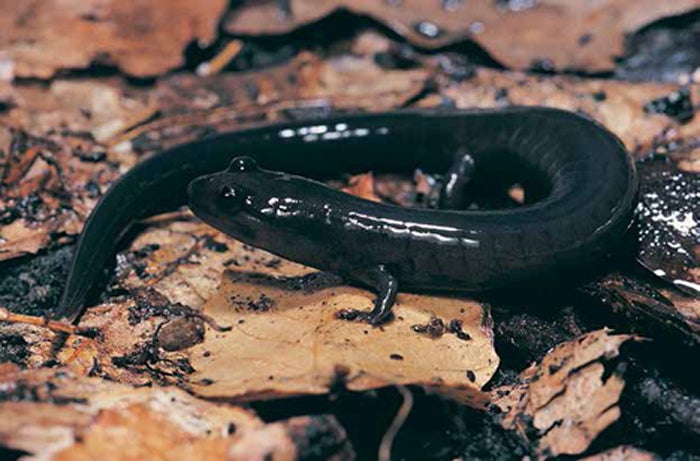The U.S. Fish and Wildlife Service (USFWS) recently awarded the Wildlife and Freshwater Fisheries Division (WFF) of the Alabama Department of Conservation and Natural Resources (ADCNR) a nearly $2.57 million land conservation grant authorized under Section 6 of the Endangered Species Act to apply toward the purchase of 1,728 acres of critical Red Hills salamander (RHS) habitat in Monroe County, Alabama. The Forever Wild Land Trust voted to provide the remainder of the funding for the acquisition at its November 3, 2022, meeting.
The land acquisition – known as the Red Hills Flat Creek Phase V tract – will be added to the existing 11,063-acre Red Hills Wildlife Management Area (WMA) in an effort to increase the amount of protected RHS habitat as well as increase access to outdoor recreation opportunities, including hunting, wildlife watching and birding.
“With the creation and expansion of the Red Hills Wildlife Management Area, our goal has been to work toward the possible delisting of the threatened Red Hills salamander and to provide additional outdoor recreation opportunities for Alabamians,” said Chris Blankenship, ADCNR Commissioner and chairman of the Forever Wild Land Trust board of trustees. “This WMA is a great example of how you can provide a sanctuary for threatened species while expanding access to outdoor recreation. We are grateful for the partnerships that have helped make this project possible.”
Partners in the Red Hills Flat Creek Phase V tract acquisition include the USFWS, ADCNR, the Forever Wild Land Trust, The Nature Conservancy in Alabama and Conservation Resources.
One of the largest lungless salamanders in the world, the RHS can grow up to 10 inches long. Its translucent purple skin helps make the RHS a strikingly beautiful animal, but you’re unlikely to catch a glimpse of this creature. It spends most of its time in a subterranean burrow, only venturing out at night to ambush small prey like crickets, spiders and earthworms.
The known range of the RHS consists of a small strip of land in the Red Hills region of Alabama. It is found nowhere else in the world.
Federally listed as a threatened species since 1977, habitat fragmentation has long been a factor that continues to threaten the future of the species. In addition to the Flat Creek Phase V tract, ADCNR is in the process of closing an additional 760 acres (Flat Creek Phase IV tract) that will be added to the WMA. When the acquisitions are finalized, the Red Hills WMA will offer 13,551 contiguous acres for RHS habitat and access to outdoor recreation.
Many other imperiled animals are potentially present or have the potential for reintroduction at the Red Hills WMA. These species include the Bachman’s sparrow, worm-eating warbler, endangered red-cockaded woodpecker, gopher tortoise, southern hognose snake, coral snake, eastern fox squirrel, as well as many aquatic species that may be present in headwater streams located on or near the WMA.
For a current map of the Red Hills WMA, visit www.outdooralabama.com/hunting/wildlife-management-areas.
ADCNR promotes wise stewardship, management and enjoyment of Alabama’s natural resources through four divisions: Marine Resources, State Parks, State Lands, and Wildlife and Freshwater Fisheries. Learn more at outdooralabama.com.
###







